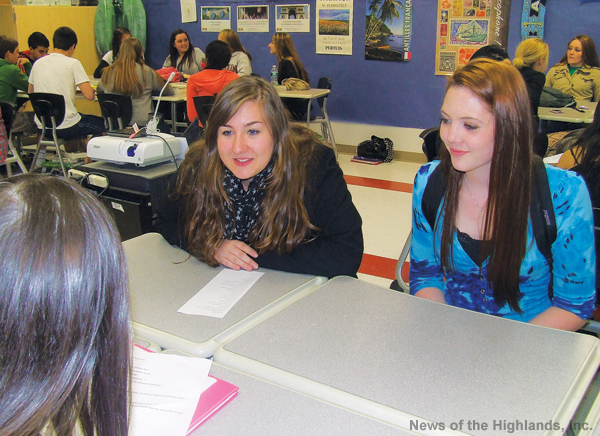
The school board had just heard a presentation on the Common Core Standards at the high school level. When it was time for input, the board’s president, Melanie Robinson, wondered about the future. Will colleges notice a difference in four or five years? Will they be shocked by the change in their incoming freshmen? If that happens, will school districts hear about it from educators at the next level?
The board met at Willow Avenue School on Jan. 27, and listened to the third in a series of three presentations on the new standards. In November, a large audience had attended the session on the changes in the elementary schools.
In later months, as the discussions focused on higher levels, there was less input from parents. Only two people spoke from the audience at the middle school presentation. And there were no comments or questions from the guests on Jan. 27.
Superintendent of Schools Neal Miller wasn’t surprised. Before the meeting, he said that’s been the pattern throughout the state. Most of the talk of anxiety has come from the families of students in the lower grades.
That doesn’t mean that the transition has been anxiety- free for the kids and faculty in the high school. Board member Tirek Gayle asked about anxiety at the Monday night meeting.
The answers were frank. “We haven’t seen it,” Jeanne Rose of the English Department said, “but we haven’t tested yet.”
Lynn Imperato, the high school’s new principal, admitted that a student had described an assignment as “intimidating.” Mrs. Imperato reported that the teacher was able to bolster the student’s confidence by reminding the entire class of other essays they had approached in the same way.
Several observations on Jan. 27 sounded familiar. The board heard that the math standards place more emphasis on reasoning and thinking abstractly. There will be fewer multiple-choice questions on the Regents exams, and more places where students will have to show their work.
A lot of non-fiction has been added to the ELA curriculum. Test questions can be tricky, because students will be asked to do more than pull out stuff from a passage. Smart test-takers will probably want to read the directions several times.
In some subjects, students will take two Regents exams next year — an old-style test and a new. The state will count the higher mark; the school district will consider both in determining a final grade.
From the faculty’s viewpoint, it’s like being a new teacher all over again. Mrs. Imperato said that on Monday night, and the board members had heard that in the past.
But they also heard that teachers are adopting their own three R’s as they approach the new material. They’re Reviewing it, and then (where necessary) they’re Revising and Redoing it to make it their own.
Ashley Schebesta of the English Department gave an example of the process. Her students worked on an inquiry project in October. They took a broad topic, beauty, and came up with a series of questions — such as, “Where does the perception of beauty come from?” Their next step was to determine how to do the research.
The end product was an impressive visual presentation that was rooted in all content areas. The students explored beauty in art, architecture and individuals, and cited their references at the end. “They were behind their own education,” Ms. Schebesta said, “and they were excited.”
It sounds promising, but the real test will come in four or five years. If colleges start to notice a difference, then maybe it will justify the difficulty that schools have experienced in the transition.



